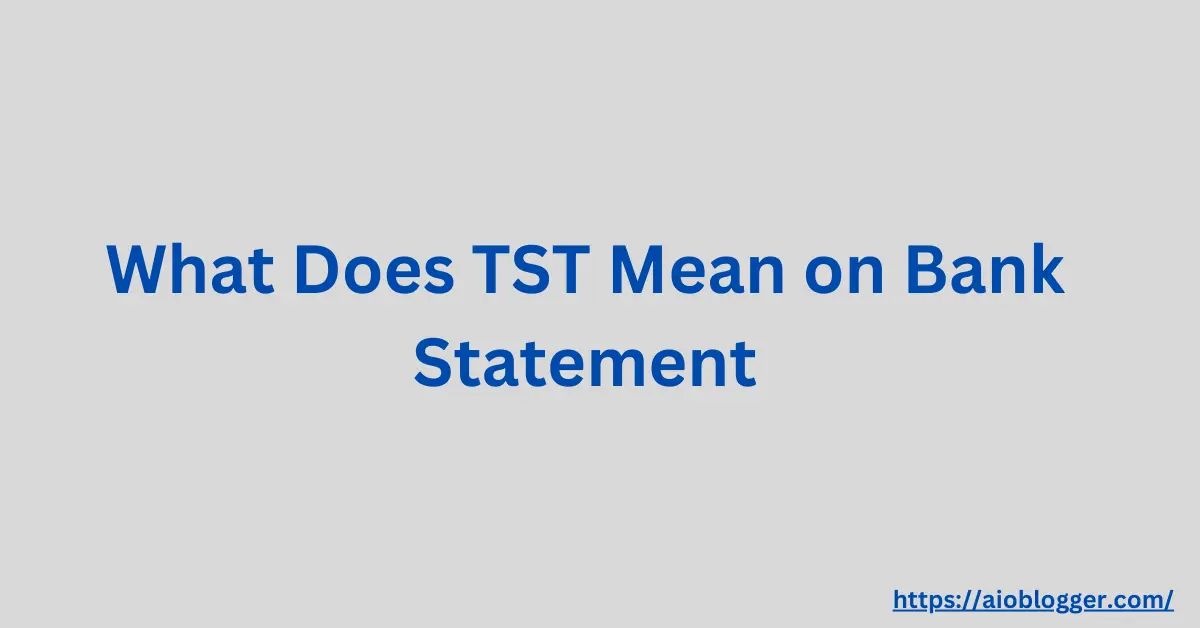What Is the TST* Bank Charge?
The TST* bank charge is a common descriptor that appears on bank statements, indicating a transaction processed through Toast, a popular point-of-sale (POS) system used by many restaurants and retail businesses. These charges usually include the abbreviation “TST” followed by additional details that help identify the specific transaction.
What Does TST Stand for?
TST stands for “Toast,” which is a payment processor that facilitates transactions for various merchants, particularly in the food and beverage industry. When you see a TST* charge on your bank statement, it typically means that you made a purchase at a location that uses the Toast POS system.
How to Find the TST Charge on Your Bank Statement?
Identifying TST charges on your bank statement involves a few straightforward steps:
Step 1: Check Your Transaction History
Review your recent transactions and look for any purchases you made at restaurants, cafes, or other establishments that might use the Toast system. Compare the dates and amounts to ensure they match the TST charges on your statement.
Step 2: Look for the Merchant Name
The TST charge often includes the name of the merchant where the transaction occurred. This information can help you quickly identify the source of the charge. For example, it might appear as “TST*RestaurantName” on your statement.
Step 3: Check for Other Similar Charges
Look for any other transactions on your statement with the TST* descriptor. Identifying patterns can help you understand whether these charges are legitimate or if there’s a potential issue with unauthorized transactions.
Why Does the TST* Charge Appear on Credit Card?
The TST* charge appears on your credit card statement because the merchant you purchased from uses the Toast POS system to process payments. This system aggregates transactions and lists them with the TST* prefix to indicate they were handled by Toast.
How to Prevent Unauthorized TST Bank Charges
Preventing unauthorized TST bank charges involves a few key practices:
Review Your Statements Regularly
Make it a habit to regularly review your bank and credit card statements. This helps you quickly identify any unfamiliar or unauthorized charges, including TST* transactions.
Protect Your Payment Information
Ensure that your payment information is secure. Use strong, unique passwords for online accounts, and avoid sharing your credit card details with unverified sources. Consider using virtual credit card numbers for online purchases.
Check the Merchant
When you see a TST* charge, verify the merchant’s legitimacy. If you don’t recognize the charge, contact the merchant directly to inquire about the transaction.
Monitor Your Credit Score
Regularly monitor your credit score for any unusual activity. Unexpected changes in your credit score could indicate unauthorized transactions or other financial issues that need attention.
Handling Unknown TST Credit Card Transactions
If you encounter unknown TST credit card transactions, follow these steps:
- Contact the Merchant: Reach out to the merchant associated with the TST* charge to clarify the transaction.
- Report to Your Bank: If the charge is unauthorized, report it to your bank or credit card issuer immediately. They can help you dispute the charge and take measures to protect your account.
- Monitor Your Account: Keep a close eye on your account for any further suspicious activity.
What is a Payment Processor?
A payment processor is a company that handles transactions between merchants and financial institutions. They ensure that payment information is securely transmitted and that funds are appropriately transferred from customers to merchants. Toast is an example of a payment processor that specializes in the restaurant industry.
Why Does Toast Put a TST Charge on Credit Cards?
Toast places a TST charge on credit cards to indicate that the transaction was processed through their POS system. This helps both the merchant and the customer identify the source of the charge, ensuring transparency and accountability in the payment process.
Understanding Pending Charges on Credit Cards
Pending charges on credit cards are temporary holds placed by merchants to verify the availability of funds. These charges are often seen with TST* transactions and will appear as pending until the transaction is finalized. Once completed, the pending charge is replaced with the final transaction amount.
Should I Worry About a TST Credit Card Charge?
In most cases, a TST credit card charge is legitimate and corresponds to a recent purchase at a restaurant or retailer that uses the Toast system. However, if you do not recognize the charge, it’s important to investigate further by contacting the merchant and your bank to ensure it’s not fraudulent.
Conclusion
Understanding what TST* means on your bank statement and how to handle these charges is crucial for managing your finances. By regularly reviewing your statements, protecting your payment information, and knowing how to address unknown charges, you can ensure that your financial accounts remain secure and accurate.



